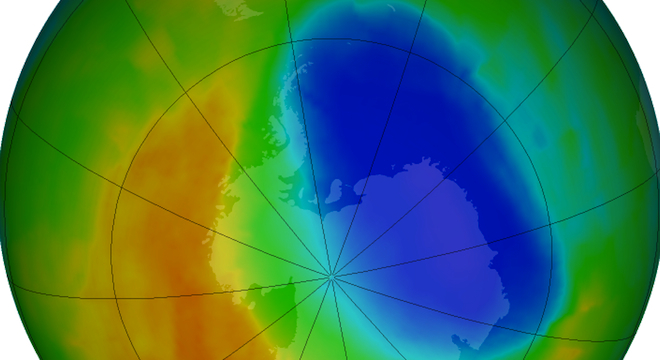The average annual size of the hole in Earth’s ozone layer over Antarctica, caused mainly by chlorine released by human-produced chemicals, is the second smallest it’s been of any year in the past 20, NASA and the National Oceanic and Atmospheric Administration (NOAA) announced Wednesday.
The hole this year had an average size of 6.9 million square miles (17.9 million square kilometers), the agencies reported, compared to the smallest average annual size during the past 20 years of 4.63 million square miles (12 million square kilometers), in 2002.
The largest annual size of the hole during the same period (and of all time) was 10.3 million square miles (26.6 million square kilometers) in 2006.
Check out the following NASA graph of the average yearly size of the hole by year:

The decline in the size of the ozone hole this year wasn’t due to tougher environmental laws or better practices by industry and polluters. Rather, it was due to normal temperature fluctuations.
“The ozone hole mainly is caused by chlorine from human-produced chemicals, and these chlorine levels are still sizable in the Antarctic stratosphere,” said atmospheric scientist Paul Newman in a statement posted on NASA’s website. “Natural fluctuations in weather patterns resulted in warmer stratospheric temperatures this year. These temperatures led to a smaller ozone hole.”
The ozone layer acts as a shield from damaging high-intensity ultraviolet (UV) radiation from the Sun, which is carcinogenic.
Here’s an image of the hole (in blue) when it reached its maximum area this year, 8.2 million square miles (21.2 million square kilometers), on September 22, 2012. The image was produced from data sampled by NASA’s Aura satellite.

Compare it to the hole at its maximum since NASA and NOAA began keeping track in 1979, 11.5 million square miles (29.9 million square kilometers) on September 9, 2000:







